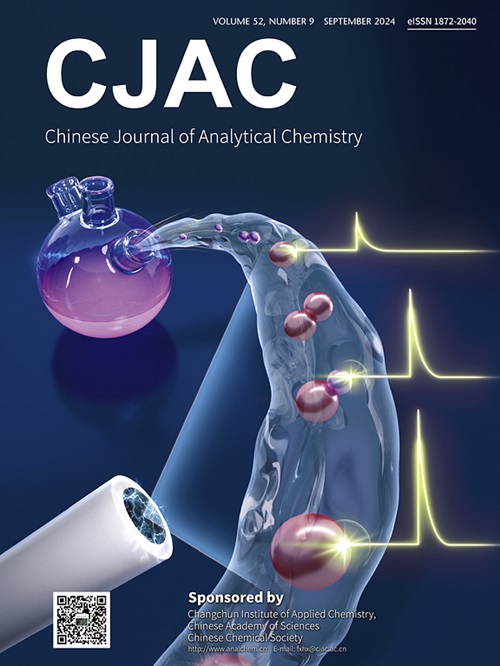Unveiling the mechanism of kaempferol in RSV-induced lung inflammation through metabolomics and network pharmacology
IF 1.3
4区 化学
Q4 CHEMISTRY, ANALYTICAL
引用次数: 0
Abstract
Background
Respiratory syncytial virus (RSV) is one of the leading pathogens associated with hospitalization for childhood pneumonia and is associated with substantial morbidity and fatality among young children and infants. There are no specific antiviral treatments for RSV infections. Kaempferol, a flavonoid present in traditional Chinese medicines, possesses antiviral activity and may affect RSV-induced lung inflammation; however, this relationship remains unclear.
Methods
We employed network pharmacology to forecast the mechanism of kaempferol in the treatment of RSV pneumonia, and used gas chromatography-mass spectrometry (GC-MS) to examine the metabolic profiles in serum. We then integrated the analysis of differential metabolites with potential targets using MetScape and assessed the interactions between kaempferol and the key targets through molecular docking. Molecular biology experiments confirmed these predictions.
Results
Our results demonstrated that kaempferol alleviated RSV-induced lung inflammation, inhibited viral replication, and reduced lung damage, possibly by modulating the JAK-STAT signaling pathway. Kaempferol primarily alleviates metabolic disorders by targeting amino acid metabolism. Molecular docking analysis indicated a strong binding affinity of kaempferol for AKT1, CASP3, SRC, EGFR, STAT1, and IL-2.
Conclusion
Kaempferol ameliorated the metabolic disruptions caused by RSV in the amino acid metabolism, via the JAK-STAT signaling cascade and mitigated the inflammatory response associated with RSV infection. This study not only provides foundational data for the broad application of kaempferol in anti-RSV research but also offers novel insights into the exploration of therapeutic mechanisms for RSV infections.

通过代谢组学和网络药理学揭示山奈酚在rsv诱导的肺部炎症中的作用机制
呼吸道合胞病毒(RSV)是与儿童肺炎住院相关的主要病原体之一,并与幼儿和婴儿的大量发病率和病死率相关。目前还没有针对呼吸道合胞病毒感染的抗病毒治疗方法。山奈酚是一种存在于中药中的类黄酮,具有抗病毒活性,可能影响rsv诱导的肺部炎症;然而,这种关系尚不清楚。方法采用网络药理学方法预测山奈酚治疗呼吸道合胞病毒肺炎的作用机制,并采用气相色谱-质谱联用技术检测血清代谢谱。然后,我们利用MetScape将差异代谢物与潜在靶点的分析结合起来,通过分子对接评估山奈酚与关键靶点之间的相互作用。分子生物学实验证实了这些预测。结果山奈酚可减轻rsv诱导的肺部炎症,抑制病毒复制,减轻肺损伤,可能与调节JAK-STAT信号通路有关。山奈酚主要通过靶向氨基酸代谢来缓解代谢紊乱。分子对接分析表明山奈酚对AKT1、CASP3、SRC、EGFR、STAT1和IL-2具有较强的结合亲和力。结论山奈酚通过JAK-STAT信号级联改善RSV引起的氨基酸代谢紊乱,减轻RSV感染相关的炎症反应。本研究不仅为山奈酚在抗RSV研究中的广泛应用提供了基础数据,而且为探索RSV感染的治疗机制提供了新的见解。
本文章由计算机程序翻译,如有差异,请以英文原文为准。
求助全文
约1分钟内获得全文
求助全文
来源期刊
CiteScore
3.60
自引率
25.00%
发文量
17223
审稿时长
35 days
期刊介绍:
Chinese Journal of Analytical Chemistry(CJAC) is an academic journal of analytical chemistry established in 1972 and sponsored by the Chinese Chemical Society and Changchun Institute of Applied Chemistry, Chinese Academy of Sciences. Its objectives are to report the original scientific research achievements and review the recent development of analytical chemistry in all areas. The journal sets up 5 columns including Research Papers, Research Notes, Experimental Technique and Instrument, Review and Progress and Summary Accounts. The journal published monthly in Chinese language. A detailed abstract, keywords and the titles of figures and tables are provided in English, except column of Summary Accounts. Prof. Wang Erkang, an outstanding analytical chemist, academician of Chinese Academy of Sciences & Third World Academy of Sciences, holds the post of the Editor-in-chief.

 求助内容:
求助内容: 应助结果提醒方式:
应助结果提醒方式:


